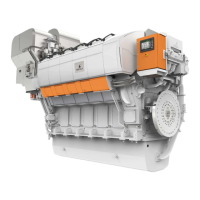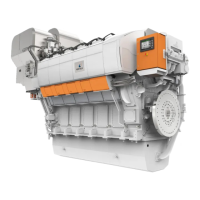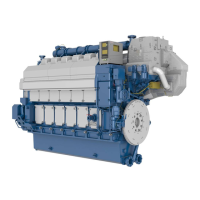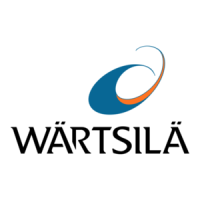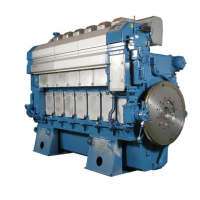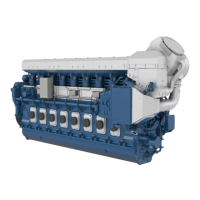● Ship Rules Part 6 Chapter 13, Gas Fuelled Engine Installations
Table 5-2 Classes of piping systems as per DNV rules
Class IIIClass IIClass IMedia
°CMPa (bar)°CMPa (bar)°CMPa (bar)
and < 170< 0.7 (7)and < 300< 1.6 (16)or > 300> 1.6 (16)Steam
and < 60< 0.7 (7)and < 150< 1.6 (16)or > 150> 1.6 (16)Flammable fluid
----AllAllFuel gas
and < 200< 1.6 (16)and < 300< 4 (40)or > 300> 4 (40)Other media
5.5 Insulation
The following pipes shall be insulated:
● All trace heated pipes
● Exhaust gas pipes
● Exposed parts of pipes with temperature > 60°C
Insulation is also recommended for:
● Pipes between engine or system oil tank and lubricating oil separator
● Pipes between engine and jacket water preheater
5.6 Local gauges
Local thermometers should be installed wherever a new temperature occurs, i.e. before and
after heat exchangers, etc.
Pressure gauges should be installed on the suction and discharge side of each pump.
5.7 Cleaning procedures
Instructions shall be given at an early stage to manufacturers and fitters how different piping
systems shall be treated, cleaned and protected.
5.7.1 Cleanliness during pipe installation
All piping must be verified to be clean before lifting it onboard for installation. During the
construction time uncompleted piping systems shall be maintained clean. Open pipe ends
should be temporarily closed. Possible debris shall be removed with a suitable method. All
tanks must be inspected and found clean before filling up with fuel, oil or water.
Piping cleaning methods are summarised in table below:
Table 5-3 Pipe cleaning
MethodsSystem
A,B,C
D,F
1)
Fuel gas
A,B,C,D,FFuel oil
A,B,C,D,FLubricating oil
5-4 DBAE248994
Wärtsilä 31DF Product Guide5. Piping Design, Treatment and Installation
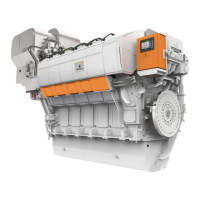
